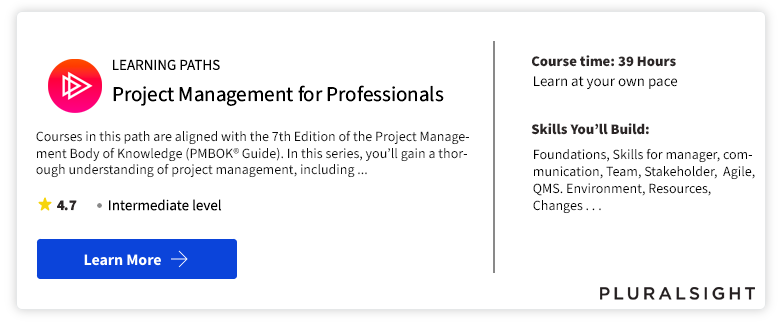What is Risk Monitoring and Control?
Risk monitoring and control refer to the process of keeping track of identified risks and mitigation measures against the risk management plan. The process involves monitoring the identified risks, ensuring the execution of risk responses as per the plan, evaluating the risk management plan for mitigating risks, identifying new risks having an impact on the deliverables, monitoring and controlling the risk triggers, etc.
It is a continuous process that must be followed daily. If any new risks or similar symptoms are determined, they should be reported immediately to the project manager so that evaluation can be done immediately without losing any parameters. A risk trigger is a term used for the events which cause a risk to occur.
- Inputs for Monitoring and Control of Project Risks
- Tools for Monitoring and Controlling Project Risks
- Outputs for Monitoring and Controlling Project Risks
Inputs for Monitoring and Control of Project Risks
Let us discuss some inputs for monitoring and control of project risks:
- Risk Register: It lists the details of all identified risks, their causes, responses, symptoms, and warnings.
- Project Management Plan: It includes the risk management plan, team members’ information, resources required for monitoring the risks, etc.
- Work Performance Report: It has a record of work performance status.
Tools for Monitoring and Controlling Project Risks
Tools for monitoring and controlling project risks:
- Risk Assessment: It involves checking for the past identified risks and new risks, and generating risk responses.
- Risk Audits: The effectiveness of risk responses applied should be documented. These documents are needed in scheduled meetings to discuss the project’s progress.
- Variance and Trend Analysis: The performance of the project in terms of the risks incurred, responses taken instead of that, the progress of the project, etc. should be monitored. This analysis helps in predicting the output of the project in the future.
- Technical Performance Measurement: Technical aspects of the project should be measured by testing the achievement of the project till that time. It determines the technical success of the project.
- Reserve Analysis: Reserves of the risk should be analyzed for deciding on their adequacy in the complete project tenure.
- Status Meetings: Regular team meetings should be conducted for all the issues and achievements of the project.
Outputs for Monitoring and Controlling Project Risks
Outputs for monitoring and controlling risks are:
- Work Performance Information: It includes a record of risks occurring in the project throughout the term and whether a response is needed for the same or they can be ignored. It also includes schedule progress, deliverables status, costing, the requirement of resources, etc.
- Organizational Process Assets Updates: They involve templates for risk planning, risk breakdown structure, and lessons learned from previous issues and errors.
- Change Requests: They involve modifications in the project plan as per the need, such as adding the extra budget, extending the schedule, including more resources, etc. for dealing with emergency purposes.
Project Risk Response and Evaluation
Risk response planning is the final step in the risk management process. In this process, risk responses are developed. The risk response can be drawn based on three categories of risks, viz. controllable known risks, uncontrollable known risks, and unknown risks. While risk responses can be developed for known risks, no response can be developed for unknown risks.
Now let us study how a risk response is created for controllable and uncontrollable known risks.
Controllable Known Risks
Risk response for controllable known risks involves risk prevention. Risk prevention can be achieved in two ways, which are:
Risk Avoidance
As the name suggests, the risk avoidance approach is all about eliminating risks and not taking them at all. The simplest way of avoiding a risky project is not to take that project.
Risk Mitigation
It involves taking measures for reducing the probability of the occurrence of a risk and its impact on the overall project. It is not meant to eliminate the risk, but to reduce the risk exposure. Providing safety training and safety gear to construction workers on a site is for mitigating the risk of injury or accident. It does not eliminate the risk, but it certainly reduces the probability or impact of risk. Similarly, some risks are not mitigated within a project but are transferred to others.
Uncontrollable Known Risks
Risk response for uncontrollable known risks involves reactive response after a risk event has occurred. It may be done through contingency planning, where a contingency budget is set aside to take care of the risk event. For example, assume that 2% of the inventory will get damaged, destroyed, or stolen and will have to be purchased again.
However, the budget for the additional 2% inventory can be set aside as a contingency budget if, in case, the inventory damage exceeds the quantity already factored in.
The other possibility, concerning dealing with effects, is that you may simply “accept” the risk if it occurs and not respond. It can be for two extreme reasons:
- If the loss in case of a risk event is too trivial, you may not want to respond to such a risk since planning the response for it might be costlier.
- If the loss in case of a risk event is massive and beyond control, the only option is to “accept” the risk.
Tools and techniques employed for risk response planning are the same as those studied before. Several risk response strategies are being developed in the planning process and the one best suited for the risk applied at that time to deal with risks.
The risk response actions are based on the 4Ts:
- Terminate: Risk termination is done by changing the project plan to terminate the impact of risk on the project. If the termination of the risk is not possible, it may be avoided by taking pre-emptive actions.
- Treat: Treatment involves reducing the probability of risk by taking actions in advance at an early stage. it may require extra resources, an extra schedule, and modification in a plan to minimize risks.
- Tolerate: Tolerance doesn’t ask for any changes in the project plan. Risks are borne as no strategies can be applied to that.
- Transfer: A third party is hired to deal with the risk and therefore, the project risk is transferred to them
Best Project Management Courses
Project management skills are in demand. If you are ready to get started, consider enrolling in the Google Project Management: Professional Certificate Learn the job-ready essentials of project management in six months or less, such as initiating projects, risk management and change management. Also we have made list of best project management courses as there are a plethora of options available, and it can be challenging to identify the best one.
Best Project Management Tool
Best for:
- Mid & Large Size Team
- Higher Plan
- Standard Feature
- Flexible Database & Stability
Best for:
- Small & Growing Team
- Smaller Plan
- Standout Feature
- Try New Feature
The ideal project management tool selection will eventually rely on the particular requirements of your team. We suggest experimenting with the free versions of various tools to gauge your team’s comfort level and then proceeding accordingly.
Project Management Tutorial
(Click on Topic to Read)
- What is Project Management?
- Functions of Project Management
- What is Project?
- Project Managers
- What is Project Life Cycle?
- Project Feasibility Study
- What is Project Analysis?
- What is Project Planning?
- What is Project Selection?
- What is Project Schedule?
- What is Project Budget?
- What is Project Risk Management?
- What is Project Control?
- Project Management Body of Knowledge (PMBOK)
- Best Project Management Tools
- What is Project Organisation?
- What is Project Contract?
- Types of Cost Estimates
- What is Project Execution Plan?
- Work Breakdown Structure (WBS)
- Project Scope Management
- Project Scheduling Tools and Techniques
- Project Risk Identification
- Risk Monitoring
- Allocating Scarce Resources in IT Project
- Goldratt’s Critical Chain
- Communication in Project Management | Case Study
- Plan Monitor Control Cycle in Project Management
- Reporting in Project Management
- IT Project Quality Plan
- Project Outsourcing of Software Development
- Implementation Plan of Software Project
- What is Project Implementation?
- What is Project Closure?
- What is Project Evaluation?
- Software Project Management Challenges
- What is Project Management Office (PMO)?
- IT Project Team
- Business Case in IT Project Life Cycle
- PMP Study Guide







